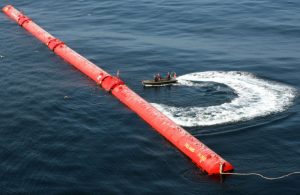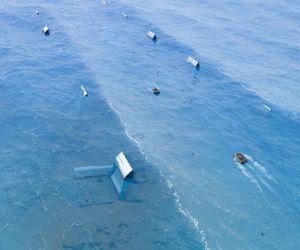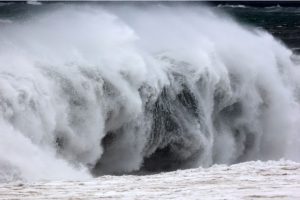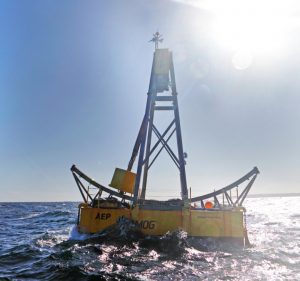The rhythmic pounding of ocean waves hints at a vast untapped reservoir of energy. Despite humanity’s success in harnessing renewable energy from the sun, wind and rivers, the dream of ubiquitous wave energy remains elusive despite decades of research. However, with the worsening climate crisis and simmering geopolitical tensions in the South China Sea, there has been a resurgence of interest in this sustainable energy source, seen as a complement to solar and wind power. We explore the complexities and potential of wave energy and speculate on whether it is finally coming of age.

Ocean waves, generated by wind blowing over the surface of the ocean, are one of the world’s largest untapped sources of energy (alongside deep geothermal). Estimates vary, but the Intergovernmental Panel on Climate Change puts the theoretical annual global wave energy potential at 29,500 TWh, surpassing the combined human consumption of electricity. Yet, as of 2021, only half a gigawatt of wave power had been installed globally.

One challenge is the up-and-down motion of waves, which requires a different approach to generating energy. “Winds and currents go in one direction. It’s very easy to spin a turbine or a windmill when you’ve got linear movement. Waves aren’t linear, they’re oscillating, so we have to do is be able to turn this oscillatory energy into some sort of capturable form,” said Burke Hales, professor of oceanography at Oregon State University and chief scientist at PacWave, an offshore wave energy test site in Oregon. And it is not just the height of the waves that is important, but also their period—the time between wave crests—which complicates the problem of optimisation.
The problem of finding a single solution
Since as early as 1799, innovators have been devising methods to harness wave energy, resulting in more than 1,000 different designs for wave energy converters. These encompass a variety of approaches, including point absorbers, which harvest energy from the up-and-down motion of anchored buoys; surface attenuators, some of which resemble colossal segmented sea snakes floating on the surface, whose flexing segments drive hydraulic pumps to generate electricity; oscillating water columns, which use wave action to pressurise trapped air and drive turbines; and oscillating wave surge converters, employing flaps anchored to the seabed to generate electricity through rocking motion.

Despite the plethora of creative approaches, scientists have yet to converge on the optimal design that can operate effectively across a wide range of climates while enduring severe storm conditions. Rather than a single solution, it may be that different devices will prove suitable depending on the local conditions or water depth where they are deployed. The main hurdle to overcome is cost. As Professor Hales notes, “the ocean is a challenging environment to work in and build infrastructure in. It moves, sometimes violently. And it’s corrosive.” The cost of designing and building wave energy technology, maintaining machinery and protecting equipment from corrosive seawater has led to a significant cost gap between wave energy and other renewable energy systems.
For now, wave power can only compete in the most remote locations where the price of alternative energy sources such as diesel is prohibitive. This appears to be the case with the recent launch of China’s first independently developed megawatt-scale floating wave energy generation device, “Nankun,” in June 2023. Weighing 6,000 tonnes, the device is capable of generating up to 24 megawatt-hours of electricity daily, equivalent to powering 3,500 homes. According to Stephen Chen, the science news editor at the South China Morning Post, the strategic rationale behind this venture to supply backup power for military radar stations situated on the remote artificial islands China has been constructing in the South China Sea amid territorial disputes with its neighbours. Transporting fossil fuels to these isolated islands is both costly and time consuming, and vulnerable to bad weather or geopolitical tensions. And conventional renewable energy sources are not suitable for these tiny artificial islands, reports Chen.

Leaving aside the possible military motivations behind China’s floating wave energy technology, the fact that this global powerhouse is prioritising research and investment in wave energy is a significant step forward for a field of research that has long been hampered by sluggish progress. It’s worth remembering that key innovations such as GPS and the Internet emerged from US military funding during the Cold War era, highlighting the transformative potential of military-driven technological progress. While the effectiveness of this floating power station, whose sheer size represents a breakthrough, remains uncertain, the prospect of continued scaling and cost reduction, mirroring China’s successes with solar panels and wind farms, points to a future where floating wave energy devices such as this could perhaps one day supply energy competitively to onshore grids.
But regardless of who finally cracks the code on affordable wave energy, it will be welcome news for those working to transform the world’s energy systems towards a more sustainable model.
Comments on this publication